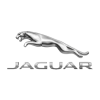
2016 Jaguar XJ


Key Specifications for 2016 Jaguar XJ






Buyer’s Guide
Despite its eye-catching exterior and interior styling, and high-performance powertrains, Jaguar’s XJ is often-overlooked vehicle in the full-size luxury sedan segment. A rare sight on Canadian roads, opting for one is a sure-fire way to stand out against a crowd that typically defaults to Benz S-Classes, BMW 7s, and the Lexus LS.
For 2016, the XJ has been given a mid-cycle update that focuses on enhancing the vehicle’s styling and technology offerings. Not that you’d be easily able to tell, though – the biggest change to the XJ’s styling is from its brand new headlamps, which feature full LED beams. They flank an enlarged grille, and sit above a new front bumper. The changes are even subtler at the back, with new oval exhaust tips. Nonetheless, there’s still much to appreciate about the design, including its blacked out rear pillars and graceful waterfall tail lights.
Two powertrains continue to be offered for the Canadian market. The standard XJ engine is a 3.0-litre supercharged V6 engine that’s good for 340 hp and 332 lb-ft of torque. It comes mated to a ZF eight-speed automatic transmission, and features all-wheel drive as standard. The XJ V6 can hit 0-100 km/h in 6.4 seconds.
On the opposite end of the spectrum is the XJR, which uses a rip-roaring 550-horsepower supercharged V8 engine, paired to an eight-speed automatic plus Jaguar’s electronically controlled limited-slip rear differential. It’ll hit 100 km/h in 4.6 seconds. Mechanically the powertrain is unchanged, but Jaguar has fitted a brand new electric power steering system which has been tuned to deliver the same level of feedback as the previous hydraulic rack. This setup also allows the XJR to offer a valet function – namely, it’ll parallel park and perpendicular park itself for you. Unfortunately the electrical power steering isn’t offered on the XJ V6 as it could not be accommodated due to packaging constraints.
On the technology front, the XJ receives Jaguar’s latest InControl infotainment system. It’s a notable improvement over the old unit, which was criticized for being slow and laggy. Upgrades to the processor and the graphics card, plus a solid-state hard drive up responsiveness, while common tablet and smartphone gestures such as swiping and pinching are now recognized. Similar upgrades were also made to the all-digital instrument cluster, and it can now display the navigation’s map in full-scale detail. XJs also receive new Meridian sound systems – the base level unit has 18 speakers, and 825 watts of amplification; it can be upgraded to a 1,300-watt 26-speaker setup. Long-wheelbase models can also be fitted with a pair of new 10.2-inch display screens that use either DVDs or are streamed from a smartphone, laptop, or tablet.
In total, five different XJs are offered. The entry level standard wheelbase model has now been rebranded R-Sport, in line with the F-Pace and XF models; this can be upgraded to the Portfolio which adds a more sumptuous interior and additional features. R-Sports are distinguished by their gloss black grille and exterior trim, plus sporty sill extensions. The Portfolio is also offered in long-wheelbase form. Pricing starts at $92,000, with the Portfolio and L Portfolio selling for $96,000 and $99,000 respectively.
As for the XJR, it retails for $121,000 in regular wheelbase from and $124,000 in long wheelbase form.
Review & Compare:
Photos
































































AutoTrader Review



















